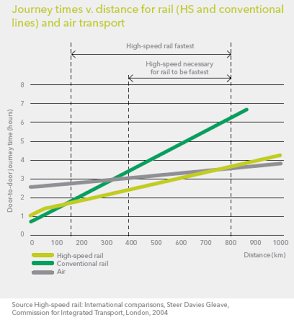

| Visitors Now: | |
| Total Visits: | |
| Total Stories: |

| Story Views | |
| Now: | |
| Last Hour: | |
| Last 24 Hours: | |
| Total: | |
High Speed Rail Benefits, Costs, Criticism and Responses
From
Invensysrail provides an analysis of high speed rail (HSR).
HSR investment has commonly resulted in:
* reduced travel times;
* reduced congestion on established modes of transport;
* improved access to markets and commerce;
* decreased carbon footprint in comparison to road and air transport;
* and creating industry growth and export opportunities
Wikipedia – Very few high-speed trains consume diesel or other fossil fuels but the power stations that provide electric trains with power can consume fossil fuels. In Japan and France, with very extensive high speed rail networks, a large proportion of electricity comes from nuclear power. On the Eurostar, which primarily runs off the French grid, emissions from traveling by train from London to Paris are 90% lower than by flying. Even using electricity generated from coal or oil, high speed trains are significantly more fuel-efficient per passenger per kilometer traveled than the typical automobile because of economies of scale in generator technology.
Reduced travel times.
* HSR offers faster net travel times than conventional road, rail and air travel between distances of approximately 150 kilometres (km) and 800 km.
* For distances shorter than 150 km, the competitive advantage of HSR over conventional rail is decreased drastically by station processing time and travel to
and from stations.
* For distances longer than 800 km, the higher speed of air travel compensates for slow airport processing times and long trips to and from airports.
See more and subscribe to NextBigFuture at 2012-12-20 12:47:48 Source: http://nextbigfuture.com/2012/12/high-speed-rail-benefits-costs.html
Source:



